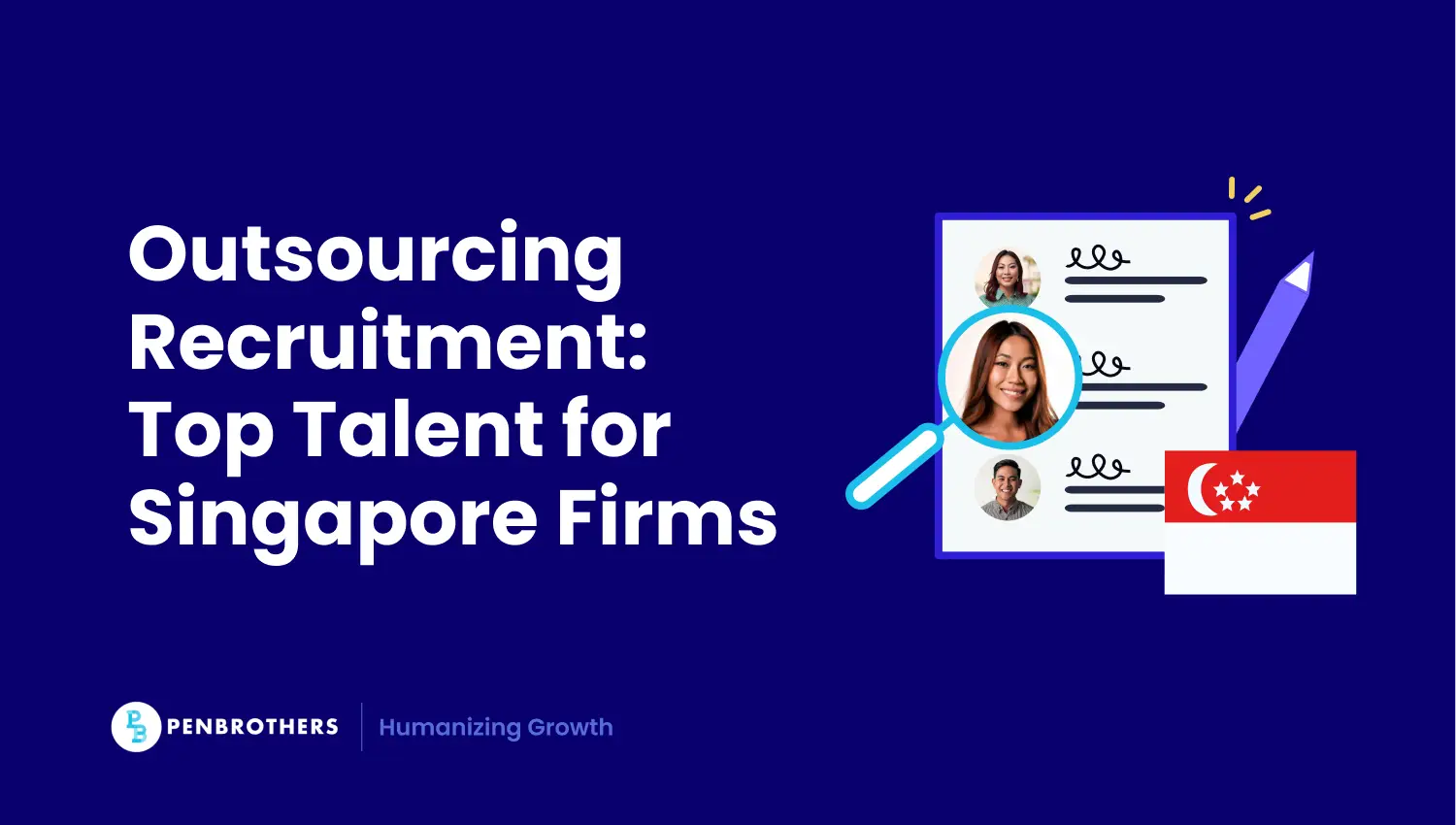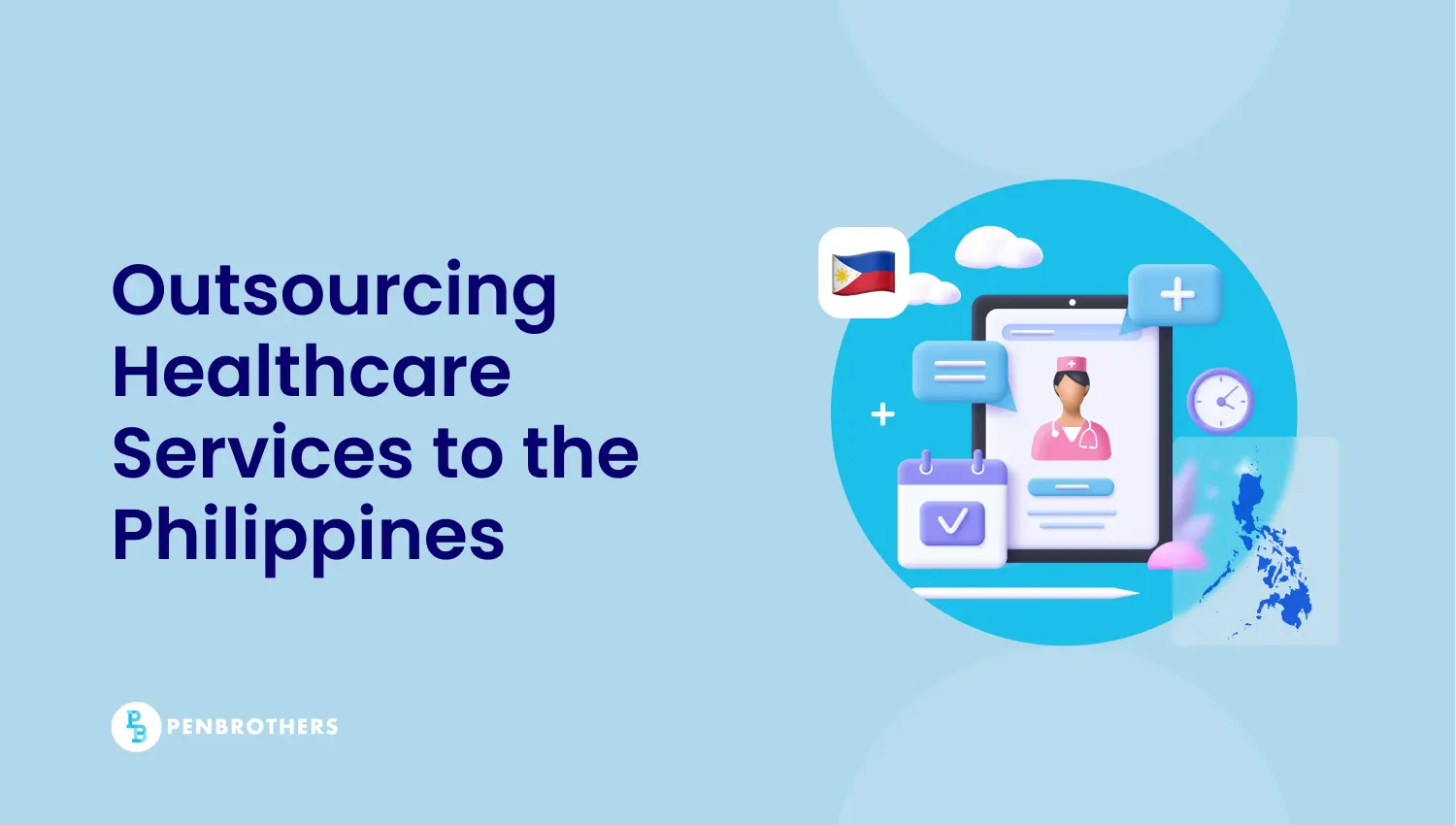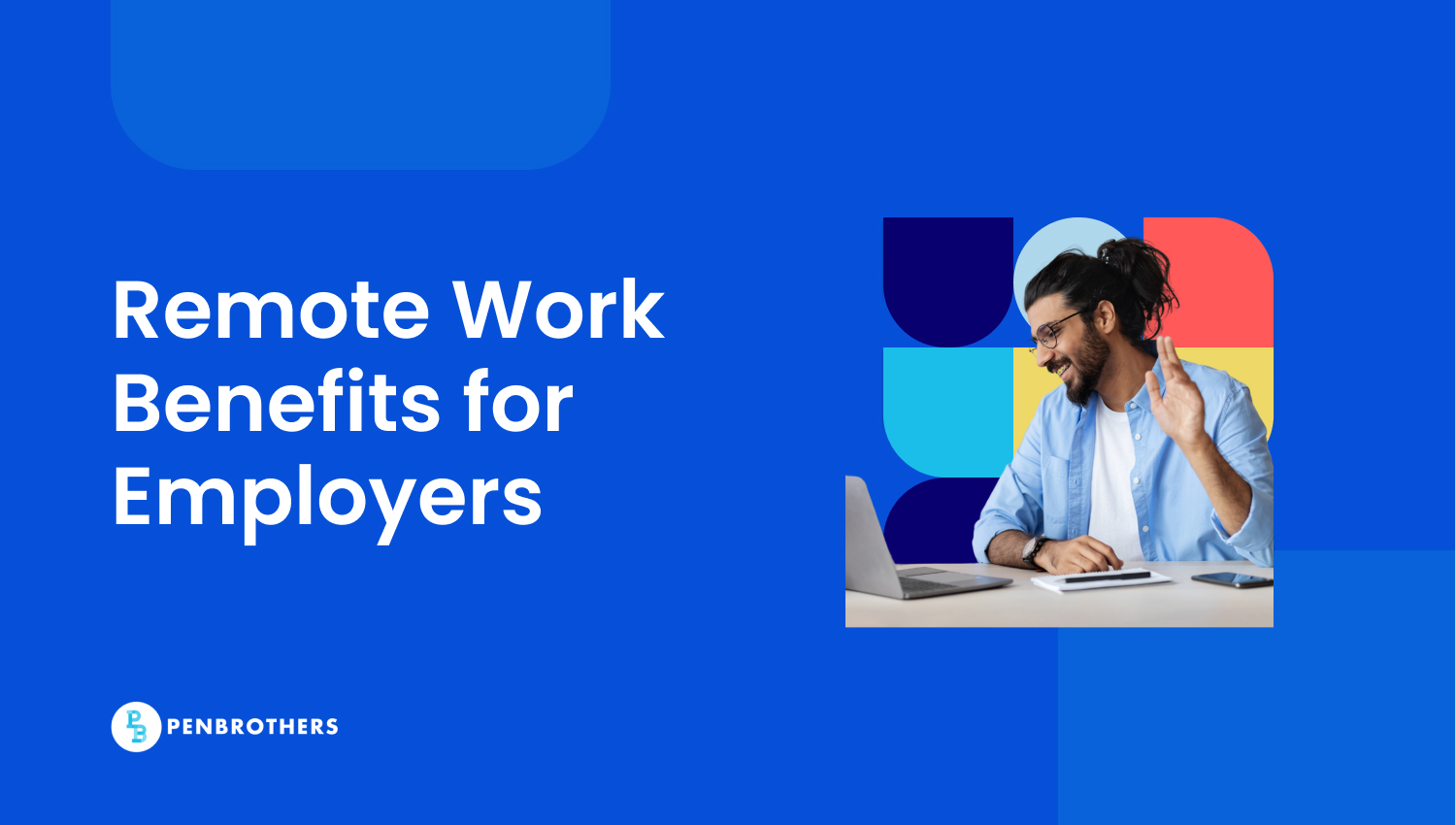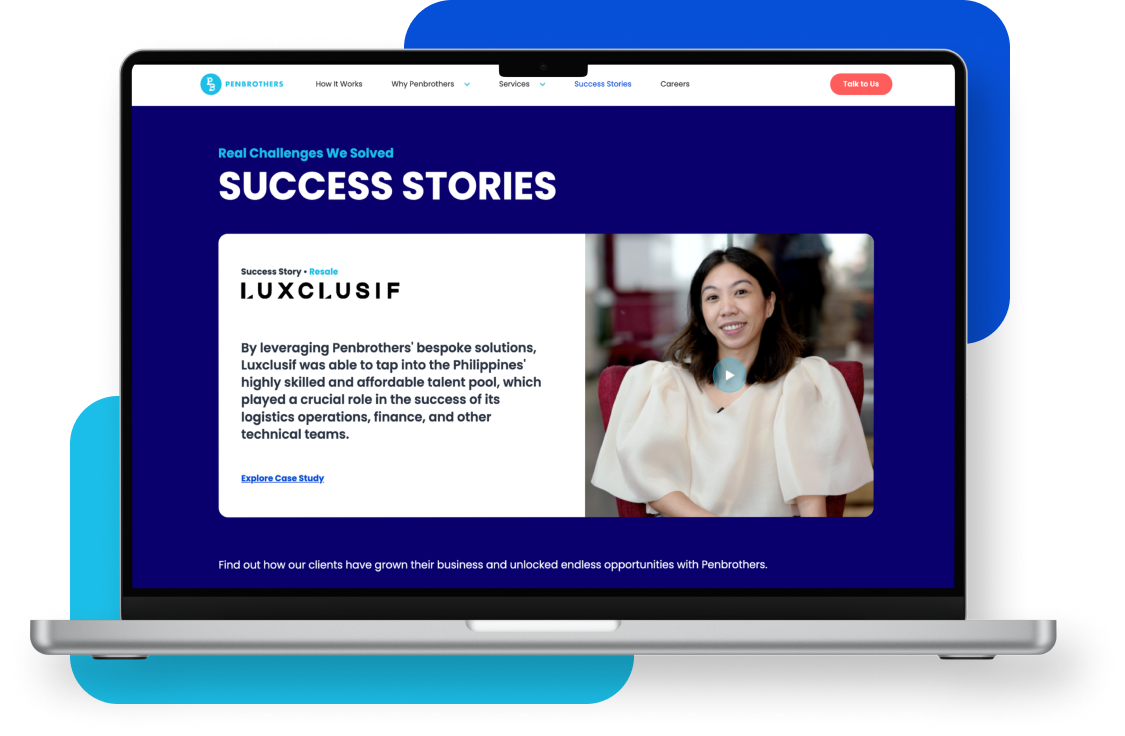What's Inside?
Why These Top 10 Australian Companies Outsource to the Philippines
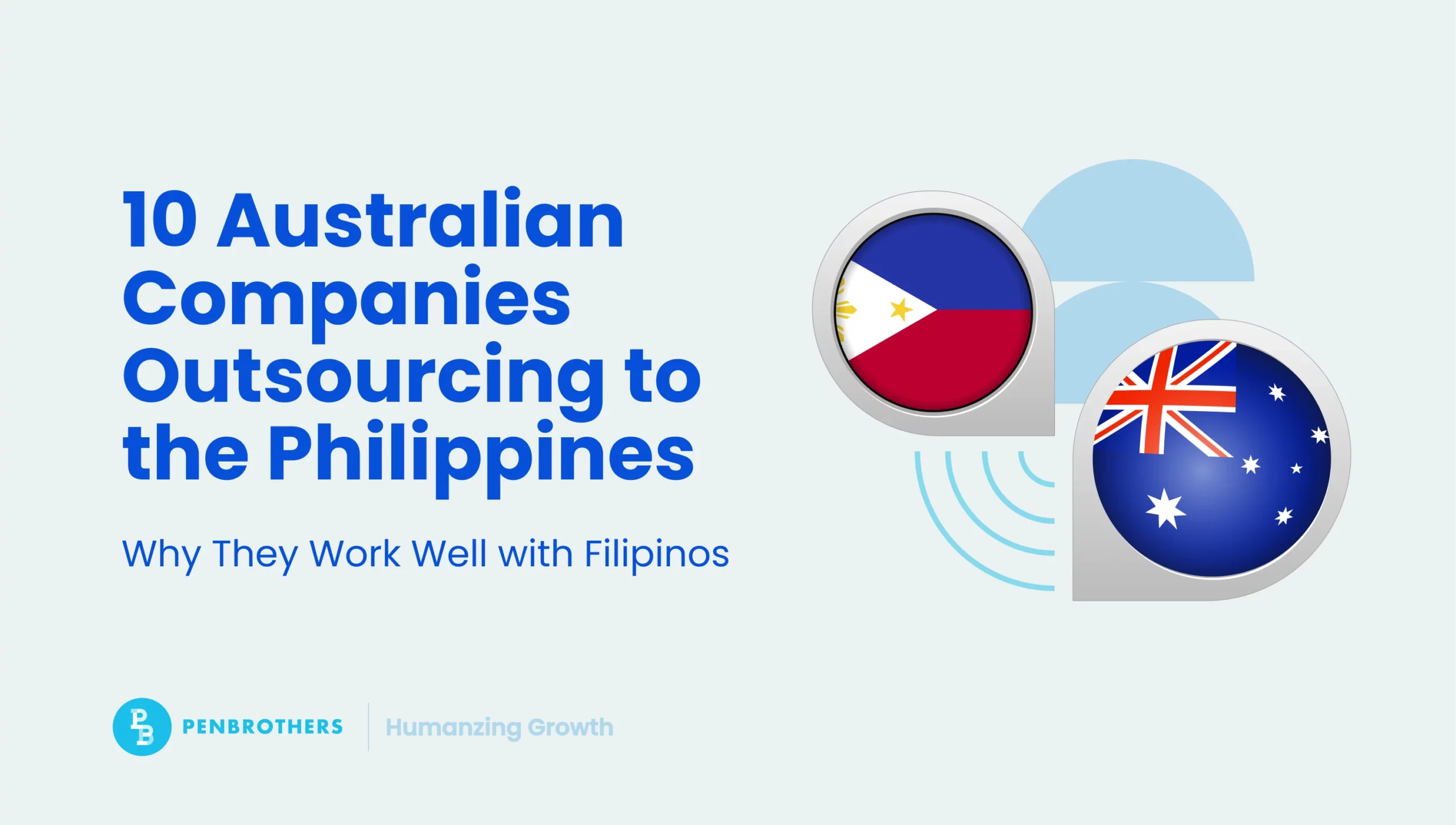
The job posting had been live for four months. Sarah Chen, CEO of a Melbourne-based fintech startup, stared at her laptop screen showing 47 applications for a senior data analyst role. None qualified.
She’d raised the salary twice. Expanded the search to Sydney and Brisbane. Even considered remote work across Australia. The few decent candidates wanted equity stakes that would dilute her cap table beyond recognition. The rest lacked the specialized skills her compliance team desperately needed.
Her head of product knocked on her office door. “Sarah, we’re three weeks behind on the regulatory dashboard. The client demo is next Friday.”
That afternoon, Sarah called her mentor, who’d scaled two successful Australian companies outsourcing to the Philippines. Within six weeks, she had a dedicated team of three Filipino analysts working seamlessly with her Melbourne office. Cost: 60% less than local hires. Quality: better than anything she’d found domestically.
The regulatory dashboard launched on time. The client signed a six-figure contract.
Sarah’s story mirrors what hundreds of Australian companies have discovered: when local talent markets fail, strategic offshore partnerships win. The question isn’t whether to consider Philippine outsourcing anymore. The question is how quickly you can get started.
Australia’s Talent Shortage Crisis Demands New Solutions
The math is brutal. Seventy-nine percent of Australian employers can’t find workers with the right skills. The talent pool has shrunk to just 2.7 suitable candidates per vacancy. And while the headlines celebrate that 33% of all jobs are in shortage rather than last year’s 36%, the relief feels hollow when you’re the CEO staring at empty desks.
This isn’t just an Australian problem. The global skills gap bleeds $8.5 trillion annually from lost productivity and missed opportunities. But here’s what makes Australia’s situation particularly sharp: we’re competing against the world’s largest economies for the same specialized talent while our population centers remain isolated by geography and time zones.
The industries hit hardest tell the story. Seventy-six percent of IT companies report skills shortages. Healthcare faces critical gaps. Professional services struggle to staff even basic functions. And the traditional solutions (higher salaries, better benefits, remote work flexibility) have reached their limits when there simply aren’t enough qualified people to go around.
Where Smart Companies Turn When Local Talent Runs Dry
Geography shaped Australia’s solution. While Silicon Valley companies raid each other’s talent pools and European firms compete across neighboring borders, Australian executives discovered something different: a mature outsourcing ecosystem just two hours ahead, where English proficiency ranks among the world’s highest and business infrastructure has been refined over three decades.
Over 300 Australian companies now employ more than 44,000 Filipino professionals across business process outsourcing, financial services, and technical roles. This isn’t the basic call center outsourcing of the 1990s. These are strategic workforce partnerships that solve Australia’s specific talent shortage crisis.
The Philippines built its outsourcing industry starting in 1992, which means today’s senior Filipino professionals have spent their entire careers working with international teams, understanding Western business practices, and adapting to complex client requirements. When Australian companies outsource to the Philippines, they’re not training beginners; they’re accessing a talent pool that’s been preparing for exactly these roles for decades.
Smart Australian executives realized something fundamental: when local talent markets fail, winning companies don’t wait for them to recover. They build competitive advantages through strategic workforce planning that transcends borders.
10 Australian Companies That Cracked the Code
Design and Creative Services
1. DesignCrowd
DesignCrowd connects businesses to global design talent through its platform. Simple concept. Complex execution. The Melbourne-based company discovered that running a global marketplace requires more than brilliant technology; it demands exceptional customer service, financial operations, and marketing coordination across time zones.
Strategic Win: DesignCrowd achieved 78% average labor cost savings across multiple roles while scaling its operations. Their accountants save 79% compared to US costs. Customer service advisors deliver 77% savings. UI/UX designers come in at 73% below traditional rates. But the real victory wasn’t the cost reduction—it was maintaining service quality while growing their user base exponentially.
“The Philippines is packed with amazing talent, and the people are really eager to do creative work,” says Guillermo Conde, Head of Customer Support at DesignCrowd. “We’re super happy to have found a solid partner in Penbrothers.”
The Insight: Filipino teams excel at both operational and creative support functions. They understand design workflows, communicate effectively with international clients, and adapt quickly to platform changes. This dual capability—analytical and creative—makes them ideal for companies operating in the creative economy.
2. Canva
Perth-born Canva transformed how the world approaches design. Co-founder Melanie Perkins chose the Philippines because of the country’s “familial feel and creativity.” That cultural insight proved prescient as Canva scaled to over 190 million users globally.
Strategic Win: Canva leveraged Filipino creativity and familial culture for international expansion, building teams that understood both the technical and emotional aspects of design democratization.
The Insight: Cultural alignment drives long-term success over pure cost considerations. Canva’s leadership recognized that creativity thrives in environments where teams feel connected to the mission, not just the paycheck.
Marketing and Growth Accelerators
3. The LOTE Agency
This Australian marketing company faced the classic agency problem: demand spikes that strain resources and threaten client relationships. Traditional hiring couldn’t solve it. By the time you recruit, train, and onboard, the campaign window has closed.
Strategic Win: The LOTE Agency achieved 75% cost savings that enabled rapid scaling during high-demand campaign periods. More importantly, they filled critical roles in just 20 days. Their Philippine team now handles project support while in-house staff provides boots-on-the-ground client service.
“The speed of hiring and quality of the talents enable us to keep delivering top-notch service to our clients and communities,” says Chief Operating Officer Brad McCaig. “We see Penbrothers as a growth partner for many more years to come.”
The Insight: Offshore teams become force multipliers during critical business moments. They provide surge capacity that traditional hiring models can’t match, allowing agencies to accept larger projects without risking delivery quality.
4. Linktree
The link management platform reached 50 million users worldwide by solving a simple problem elegantly. But elegant solutions require complex customer support as users discover creative applications the founders never imagined.
Strategic Win: Philippine teams deliver customer service excellence at scale, handling the intricate questions that arise when millions of creators use your platform in unexpected ways.
The Insight: Following Canva’s successful model, Australian tech companies discovered that Filipino teams understand the nuances of creative tools and can guide users through complex workflows with patience and expertise.
Technical Innovation and Specialized Expertise
5. Propeller Aero
Drone technology meets enterprise software in the construction and earthworks industry. Propeller Aero raised USD 15.35 million to scale their innovative platform. But innovation means nothing without the specialized talent to implement it.
Strategic Win: Propeller Aero achieved 73% cost savings while building a team of 50 handpicked talents for hard-to-fill geospatial specialist roles. The hiring process took just 40 days, a fraction of what they’d face recruiting locally for Software Engineers, Geospatial Specialists, Quality Assurance Engineers, Data Success Specialists, and GIS Specialists.
“We highly recommend Penbrothers to any company seeking to hire outstanding Filipino talent and work with a trusted partner who is committed to their success,” says Chantelle Cassin, Talent Acquisition Manager at Propeller Aero.
The Insight: Access to specialized technical talent unavailable locally becomes a competitive advantage. While competitors struggled to hire geospatial specialists in Australia’s tight labor market, Propeller Aero built a team of experts in the Philippines.
6. Employment Hero
HR solutions for SMEs across Australia and New Zealand. Employment Hero recently acquired Employment Innovations to expand their reach. Growth creates a beautiful problem: your customer service demands scale faster than your hiring capacity.
Strategic Win: Employment Hero scaled customer service to match their expanding app portfolio. Their Filipino team guides users through onboarding and troubleshoots complex HR scenarios across multiple applications.
The Insight: Offshore teams enable product expansion without operational bottlenecks. As Employment Hero added new services and acquired companies, their Philippine team absorbed the increased support volume seamlessly.
Financial Services and Professional Support
7. Macquarie
This global financial services provider operates across 33 markets and employs 16,000 people. Macquarie ranked first in the Institutional Investor’s 2024 Asia Pacific Regional Broker Rankings. When you’re managing assets and advising clients worldwide, you need technical expertise around the clock.
Strategic Win: Macquarie delegates both technical and non-technical financial work to Filipino teams, enabling 24/7 operations and specialized analysis that supports their client-facing professionals.
The Insight: Even major financial institutions rely on Philippine expertise. The days when offshore teams handled only basic back-office functions are over. Today’s Filipino professionals perform complex financial analysis, risk assessment, and client research.
8. Ascender HCM (now Dayforce)
HR and payroll platforms for multinational businesses require deep understanding of local regulations and cultural nuances. After Ceridian’s acquisition, Ascender evolved into Dayforce, expanding its global reach.
Strategic Win: Their Philippine team provides regional customer base coverage and enables local market entry throughout the Asia-Pacific region.
The Insight: Offshore teams create strategic footholds in new markets. Ascender’s Manila presence allowed them to serve Philippine companies while supporting their broader regional expansion strategy.
Healthcare and Safety Innovation
9. SafetyCulture
Workplace safety and compliance platform serving companies worldwide. SafetyCulture joined Trackhouse Racing’s partnership lineup, demonstrating its commitment to safety across industries.
Strategic Win: SafetyCulture’s Manila office serves as its hub for business analysis and customer service, combining local presence with global expertise.
The Insight: Physical presence amplifies virtual team effectiveness. Having a Manila office allowed SafetyCulture to blend the benefits of offshore cost structures with local market knowledge and deeper cultural integration.
10. Eucalyptus
A healthcare accessibility and convenience platform making medical services more approachable for patients, Eucalyptus recently planned an $8 million share sale for long-term employees, showing their commitment to sustainable growth.
Strategic Win: Enhanced patient support and internal process optimization through Filipino teams trained in healthcare protocols and patient communication.
The Insight: Healthcare companies find Filipino teams excel at patient-centric service. The cultural emphasis on care, respect, and family translates naturally to healthcare environments where empathy matters as much as efficiency.
How to Follow Their Lead: A 2025 Implementation Guide
Assessment and Planning Phase
Start with honesty. Brutal, uncomfortable honesty about where your talent gaps really hurt.
Map every role that’s been open longer than 90 days. Document the specialized skills you can’t find locally. Count the projects delayed because you lack capacity. This isn’t about cutting costs (though you will). This is about identifying where talent scarcity is strangling growth, where empty desks are costing you market opportunities, where the competition is moving faster because they solved problems you’re still wrestling with.
Your skills gap analysis should answer three questions: Which roles are impossible to fill locally? Which functions could scale 3x if you had the right people? Where are you saying no to opportunities because you lack bandwidth?
Propeller Aero discovered their geospatial specialists were the bottleneck preventing client expansion. DesignCrowd realized customer service delays were damaging their marketplace reputation. The LOTE Agency understood they were turning down campaigns because they couldn’t staff them. Clear problems. Clear solutions.
Role prioritization follows a simple matrix. High impact, low local availability goes first. Customer-facing positions that require cultural alignment come next. Highly specialized technical roles that demand specific expertise follow. Basic administrative functions can wait, though the cost savings often justify moving them early.
Vendor evaluation gets messy fast without criteria. Look for three things: proven experience with companies your size, deep understanding of your industry requirements, and infrastructure that supports long-term partnership rather than transactional relationships. The cheapest option usually costs the most in hidden problems, delayed timelines, and quality issues that damage your brand.
Execution Best Practices
Phase one proves the concept. Start small. Pick one role or function where success is measurable and visible. Employment Hero began with customer service because response times are trackable. DesignCrowd started with financial operations because accuracy is binary. Choose something that will either work spectacularly or fail quickly.
Measure everything that matters. Response times, quality scores, project completion rates, customer satisfaction metrics. Track the learning curve. Document communication challenges. Note cultural integration successes and failures. This data shapes phase two expansion and prevents you from scaling problems instead of solutions.
Phase two builds momentum. Add complementary roles that work alongside your initial team. If customer service succeeds, add technical support. If financial operations work, expand to procurement or HR administration. The goal is creating cohesive offshore departments, not scattered individual contributors who struggle to collaborate.
Success metrics vary by function, but certain KPIs appear consistently across winning implementations. Time-to-productivity measures how quickly new team members contribute value. Quality scores track whether offshore work meets your standards. Retention rates indicate cultural fit and job satisfaction. Communication effectiveness shows how well teams collaborate across time zones.
The companies that fail make predictable mistakes. They treat offshore teams as vendors instead of employees, creating us-versus-them dynamics that poison collaboration. They under-invest in cultural integration, assuming professional competence equals cultural fit. They rush expansion before proving the model works, scaling problems instead of solutions.
SafetyCulture avoided these pitfalls by establishing their Manila office as a strategic hub, not a cost center. Canva invested heavily in cultural alignment from day one. Propeller Aero measured success by business impact, not cost savings alone.
The smart companies also prepare for success. They plan expansion before they need it, establish communication protocols that work across cultures, and build career development paths that keep top performers engaged long-term.
Because here’s what the successful companies discovered: building an offshore team that works is hard. Building one that transforms your business is harder. But once you get it right, the competitive advantage becomes almost impossible for your competitors to match.
The playbook is clear. The case studies are proven. The question becomes execution.
DesignCrowd didn’t achieve 78% cost savings by accident. The LOTE Agency didn’t scale their operations in 20 days through luck. Propeller Aero didn’t hire 50 specialized geospatial experts overnight because the stars aligned. Each discovered what hundreds of Australian companies now understand: the right strategic partner transforms offshore hiring from a cost-cutting exercise into competitive advantage.
But here’s what separates the winners from the wishful thinkers. Success doesn’t come from finding the cheapest labor or the fastest hiring. It comes from finding the partner who understands that your offshore team isn’t a vendor relationship—it’s an extension of your business, aligned with your culture, committed to your outcomes, integrated into your vision for growth.
The companies featured in this analysis chose partners who deliver more than talent placement. They chose partners who provide the infrastructure, legal compliance, cultural integration, and ongoing support that turns offshore hiring into offshore success. They chose partners who understand Australian business culture while maintaining deep expertise in Philippine talent markets and employment law.
Most importantly, they chose partners who think strategically about workforce planning, who see offshore teams as solutions to talent shortage rather than substitutes for local hiring, who position international talent acquisition as a pathway to market expansion and operational resilience rather than a desperate response to rising costs.
If you’re ready to follow their lead, the path forward is straightforward. Start with a conversation about your specific talent challenges, your growth objectives, and your timeline for implementation. Discuss the roles that could transform your business if filled with the right expertise. Explore how strategic offshore partnerships could accelerate your market position while building the operational flexibility that keeps you competitive regardless of what economic disruption comes next.
Contact Penbrothers today to begin the strategic workforce planning that transformed these ten Australian companies and positioned them for sustained competitive advantage in an increasingly global marketplace.

